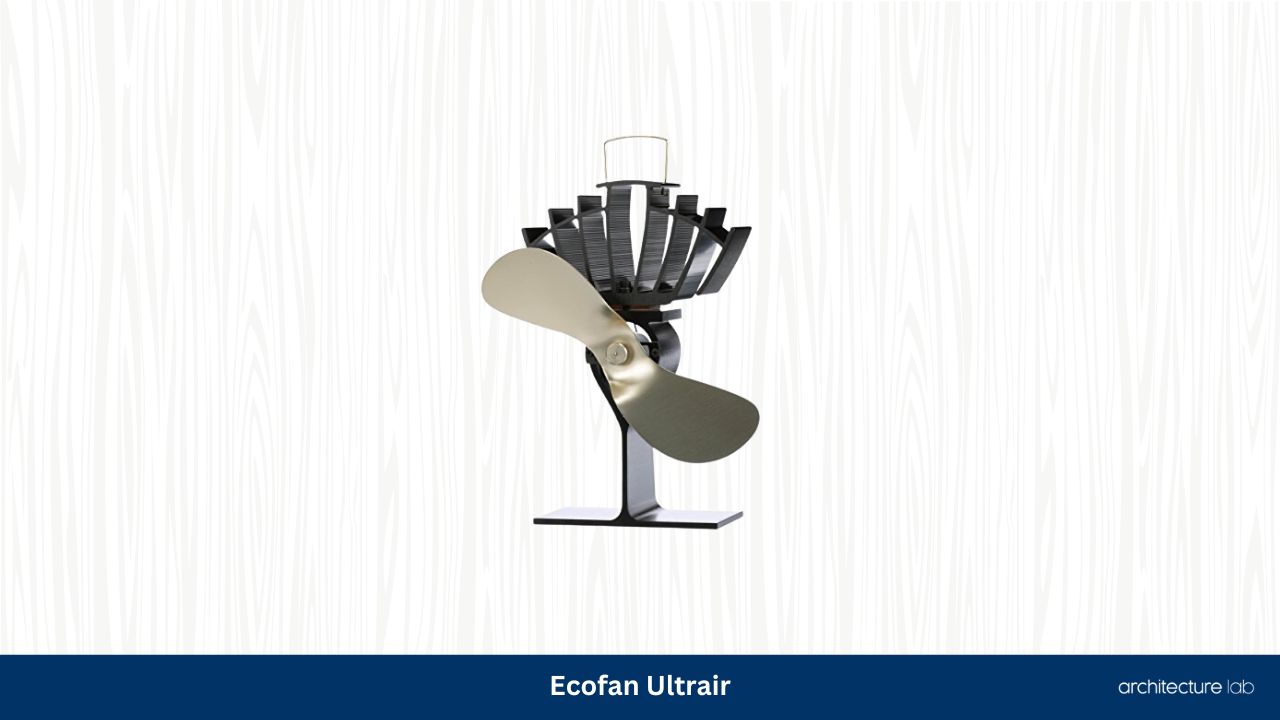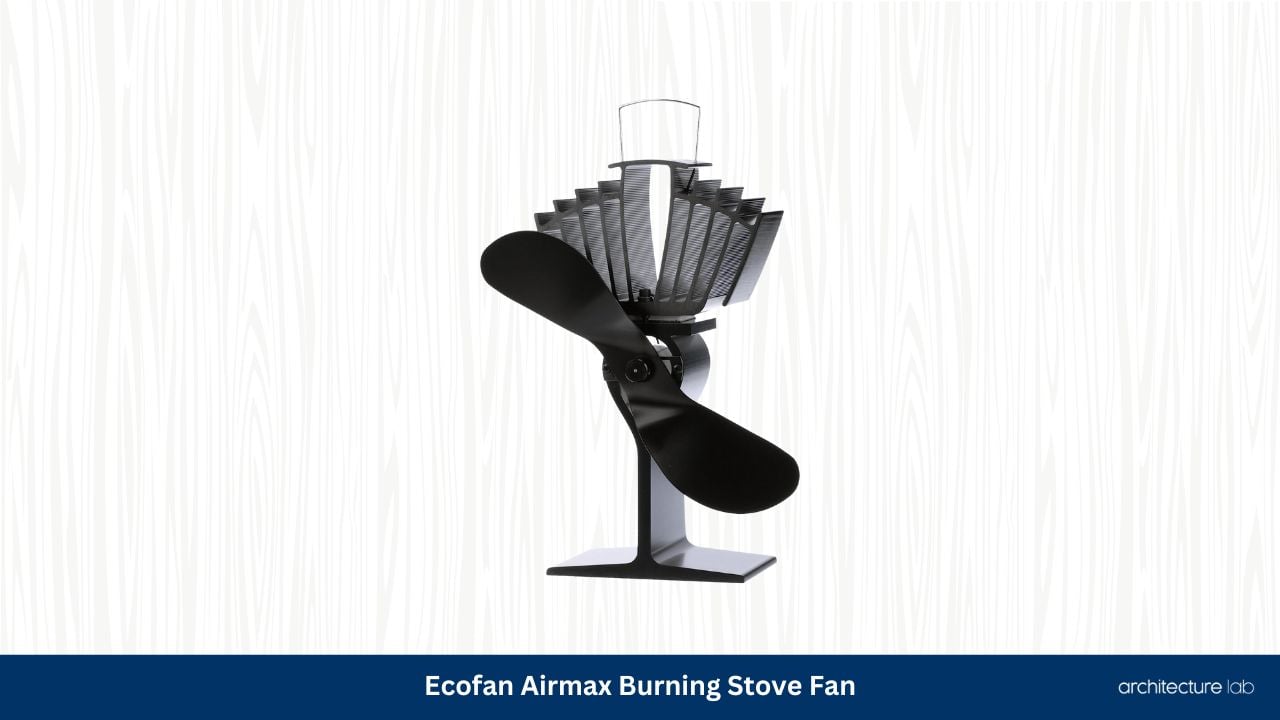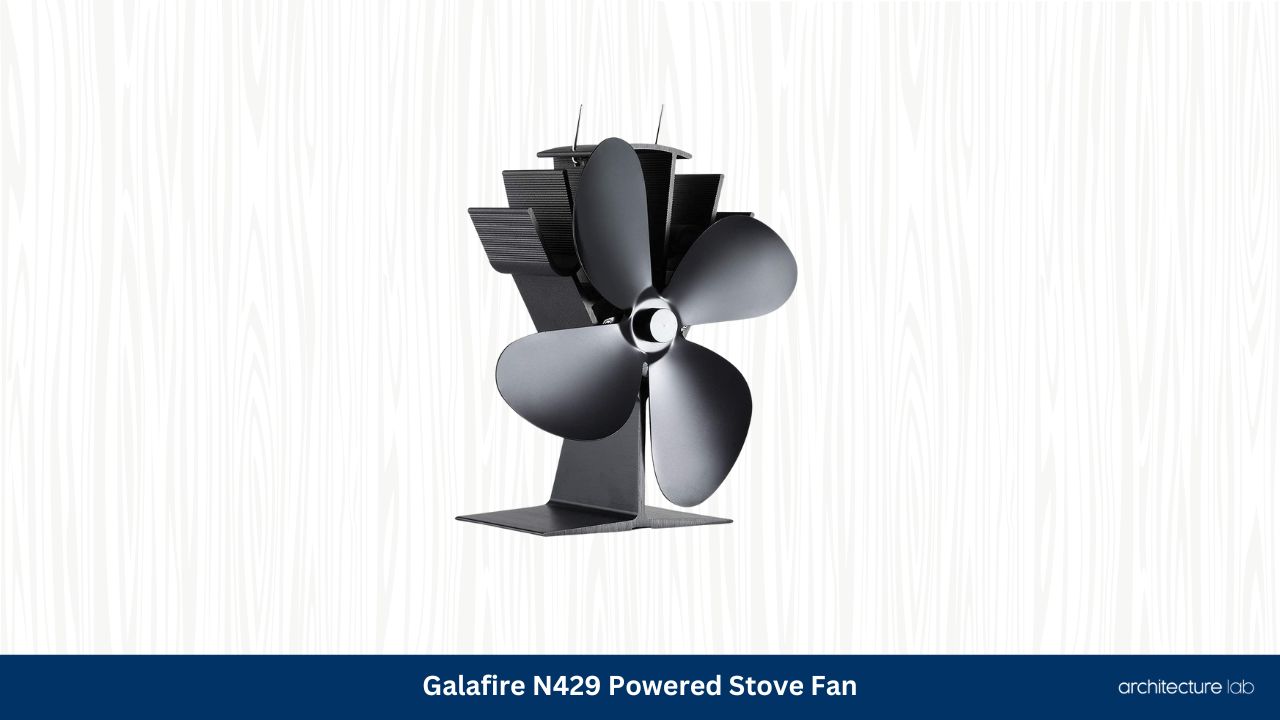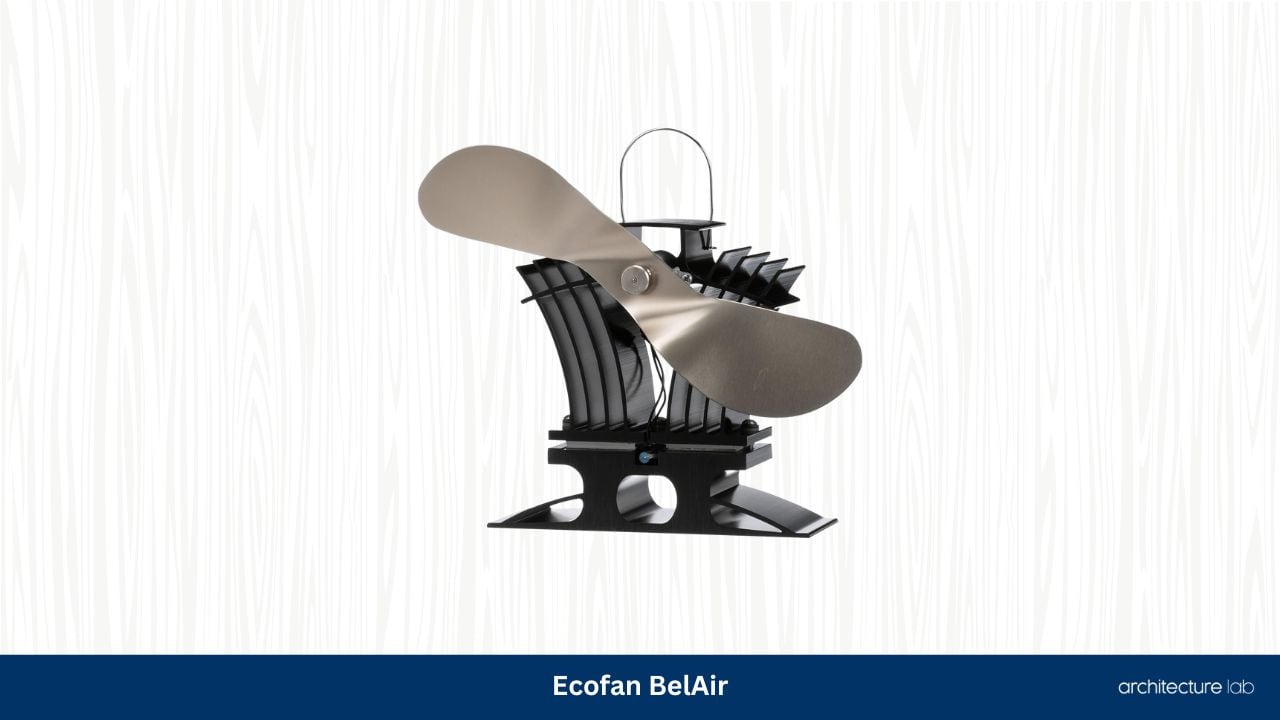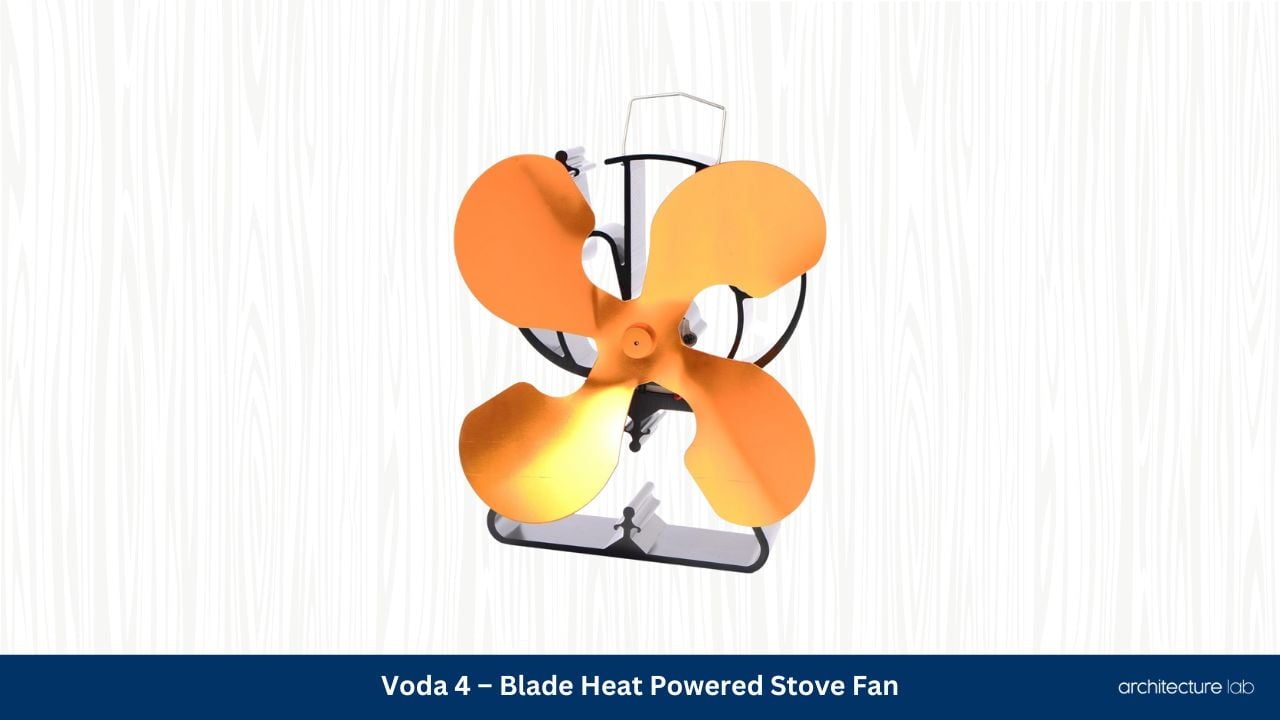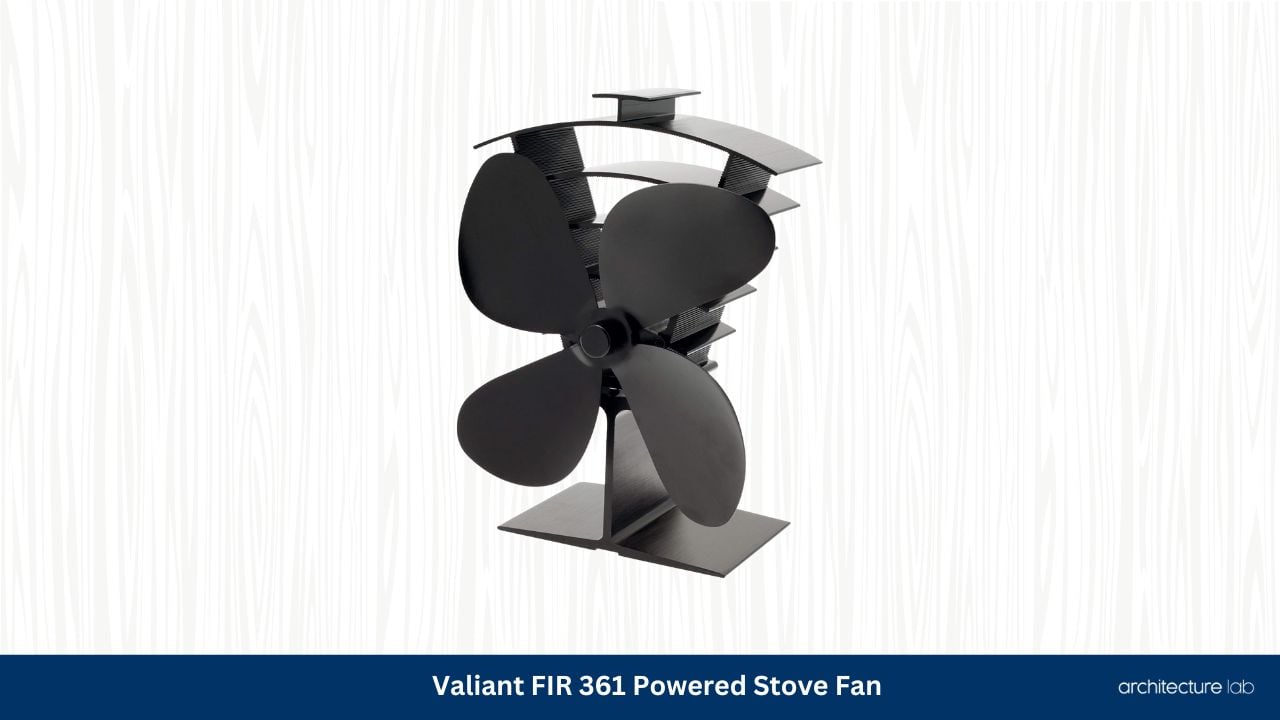Wood stove fans have become an essential addition to homes with wood-burning stoves, providing an efficient and eco-friendly solution to common heating problems.
These ingenious devices solve issues such as uneven heat distribution, excessive fuel consumption, and high energy costs. With numerous options available in the market, selecting the perfect wood stove fan can be a daunting task.
To help you make an informed decision, we’ve narrowed down the top 3 factors to consider:
Airflow Capacity: The primary purpose of a wood stove fan is to distribute heat evenly across the room. Therefore, you should pay close attention to the fan’s airflow capacity, measured in cubic feet per minute (CFM). A higher CFM indicates a more powerful fan that can effectively disperse heat over larger spaces.
Noise Level: Wood stove fans operate in living spaces where people gather to relax and unwind, making noise levels an essential consideration. Look for fans with quiet operation to ensure that they don’t disrupt your peace and tranquility. Some high-quality models boast whisper-quiet performance, which will make you forget they’re even running.
Durability and Build Quality: The best wood stove fans are built with high-quality materials to withstand the high temperatures generated by wood stoves. Look for a fan with a sturdy construction, preferably made of anodized aluminum or similar heat-resistant materials, to ensure long-lasting performance.
Now that you know the essential factors to consider when purchasing a wood stove fan, we have compiled a comprehensive buying guide in the form of a listicle to make your shopping experience a breeze.
Our recommended products section includes a variety of high-quality, efficient, and reliable wood stove fans that cater to different needs and preferences. Stay tuned for our expert-approved lists and find the perfect fan for your home!
Best Wood Stove Fan
Here is the list of the 6 best wood stove fans to help you get the most out of your wood stove.
1. Ecofan Ultrair
The unique design of Ecofan Ultrair is patented and is a scientifically-tested product. The premier company- Caframo manufactures it, and it comes with a two-year warranty. This compact and highly efficient fan will help to spread the heat evenly across the entire room from your wood stove.
When the heat-powered fan is on, you’ll only be able to hear a slight whisper due to air movement, while there is no other production of sound.
Besides, the speed of the fan will also indicate whether you’re burning the stove efficiently or not. The fan will slow down as the fire cools off, which is quite a suitable way of letting the user know that they need to put in another log.
The fan can produce power on its own due to the innate thermoelectric generator. There is a gizmo that helps to convert the heat into electric energy that turns on the fan, for instance. This indicates that the Ecofan Ultrair will work only when there is enough heat being produced by the stove, so you will not be facing any issues of cold air being blown around your room.
You should place this far behind the stovetop so that it’s nowhere close to the flue pipe. The flue pipe is probably the hottest part when your stove is working, so we don’t advise you to keep the fan anywhere close to it. Otherwise, there can be plenty of damage caused to the crucial parts of the fan.
2. Ecofan Airmax Burning Stove Fan
If you’re looking out for a fan that has a wide range of operating temperatures (185F to 650F), then the Ecofan Airmax will be a good pick. This fan has the highest rate of CFM at 175, which will heat a large area, among the entire range of Ecofan. You’ll also get a two-year warranty period, while you don’t need to worry about the assembly of the fan as it’s already done.
The fan is driven by a thermoelectric unit, in which there is no running cost yielded. And the silent operating motor will help you save about 18% of your fuel. Even when your stovetop is heated at a temperature of 85C to 345C, the fan will function efficiently. The two main benefits of the Ecofan Airmax are cost-free management and cost-effectiveness.
Overall, the speed at which the fan blades rotate is linked directly to the stovetop temperature. When the temperature is high, the fan rotates at a high speed to spread the warm air around the room. Consequently, when the stove cools down, there is not much air movement that is required, so the speed of the fan slows down.
The fan is also cord-free and doesn’t produce any sound, so you can peacefully sleep or watch TV without being disturbed. You’ll need to wipe off or lightly vacuum just over the motor of the fan to prevent any blockage of the vents from being caused by debris or dust.
3. Galafire N429 Powered Stove Fan
The versatile stove fan Galafire N429 has a compact design as it’s just over 7 inches tall, which makes it simple for you to keep it on the stovetop. You can use this fan on all kinds of stoves that are used for producing heat like wood-burning ones, coal, gas, and pellets.
It has a magnetic stove thermometer which acts as a protection system to prevent the fan from overheating. Plus, it helps to move the air up to a distance of 440ft per minute. The Galafire N429 also has a silent operation system as it creates a noise level of less than 25dB.
If you have a freestanding stove and you want your living space to be more heated, then you should get this wood stove fan. You don’t have to bear any extra cost for your electricity, as this stove fan is powered by heat. It creates a comforting amount of heat quickly, and it also helps to enhance the efficiency of your stoves.
4. Ecofan BelAir
The Ecofan BelAir model is small yet sturdy. You can use this fan on stoves that function with pellets or gas. It will operate within 75C to 200C (167F to 392F) of the temperature range.
If you try using this fan on a wood stove where the temperature can easily exceed 150C (300 F), then it can damage this product. The design of the fan will help to circulate 140cfm of heated air which will help to keep your room warm along with a reduction in the use of fuel.
The product has a two-year warranty, and while using it, you’ll realize the minimal amount of fuel that you will need for heating your room. Therefore, we believe that this fan is highly effective in helping you improve the efficiency of your stove at home. Even when the fan is working, there is no disturbance due to the lack of production of any sound.
You don’t need a separate power source for making the fan work as it comes with a thermoelectric generator (TEG). There is no cost of running the fan as TEG helps to turn the heat into electricity and which gives power to the fan. It’s also maintenance-free, but after a few years of usage you’ll have to change the motors, and the cost of replacement is reasonable.
5. Voda 4 – Blade Heat Powered Stove Fan
The Voda 4 – Blade fan will be an excellent addition to your stove if it has a flat and smooth surface. It will function well with your coal stove, pellet stove, wood-burning stove, or gas stove. You need to place this stove fan either on the side or at the back of your stove. This will help to prevent the fan from being damaged due to overheating.
It is designed for use on freestanding wood stoves, and the optimal running temperature of this fan is between 85C – 350C (185F- 660F). It operates with the power that is produced by the heat from the stove. But you should remove the fan from the stovetop when the temperature goes above 350C or 660F, as it can damage the electricity-generating units and the fan itself.
To carry or move the fan, you should wear gloves to hold the extendable handle. However, the fan has a durable and innovative design, as the blades and the fan base are made of anodized aluminum to prevent rust and corrosion.
6. Valiant FIR 361 Powered Stove Fan
The compact design of Valiant FIR 361, which has around 8-inch height, will fit into the smallest space in your home. It has quite a low starting temperature of 50 degrees Celsius and pushes air at a rate of 350 CFM.
This fan is perfect for warming up big living spaces, and adjoining rooms. Valiant is known for its world-class customer service and excellent reputation, and this stove fan good pick for the significant amount of airflow that it can produce. It has a thick anodized coating that protects it from rust and corrosion.
But, the fan does make a clicking sound while it operates so it can be disturbing at times. And there is no requirement for any batteries, and it has no maintenance cost. You can get this fan without making a hole in your wallet since the product is known for its efficiency.
Best Wood Stove Fan Comparison Table
| Product | Size (inches) | Airflow (CFM) | Blade Number | Noise Level | Temperature Range (°F) | Warranty |
|---|---|---|---|---|---|---|
| Ecofan Ultrair | 3.0”L x 5.5″W x 9.0″H | 125 | 2 | Very Silent | 212°F – 650°F | 2 Years |
| Ecofan Airmax | 3.3″L x 5.5″W x 10.0″H | 175 | 2 | Very Silent | 185°F – 650°F | 2 Years |
| Galafire N429 | 7.44″D x 2.95″W x 7.28″H | N/A | 4 | Silent | 122°F – 482°F | 2 Years |
| Ecofan BelAir | 3.5″D x 9″W x 9.5″H | 140 | 2 | Very Silent | 167°F – 392°F | 2 Years |
| Voda 4 | 4.72″D x 8.27″W x 8.27″H | N/A | 2 | Very Silent | 185°F – 660°F | 1 Year |
| Valiant FIR 361 | 4″D x 7″W x 8″H | 350 | 4 | Very Silent | 122°F –N/A | 2 Years |
Buying Guide For The Best Wood Stove Fan
A wood stove fan is a device that helps circulate the warm air produced by your wood stove throughout your room or house. It can improve the efficiency and comfort of your heating system, as well as reduce your fuel consumption and emissions.
But how do you choose the best wood stove fan for your needs? Here are some factors to consider:
Size and shape
The size and shape of your wood stove fan should match the available space on top of your wood stove. You don’t want a fan that is too big or too small for your stove, as it may affect its performance or safety. A larger fan can move more air, but it may also block the flue or overheat.
A smaller fan may fit better, but it may not be powerful enough to distribute the heat evenly. You should also consider the shape of your fan, whether it is round, square, rectangular, or oval, and how it fits with the design of your stove.
Blade number
The number of blades on your wood stove fan can affect its airflow and noise level. Generally, more blades mean more airflow, but also more noise. A fan with fewer blades may be quieter, but it may also move less air. You should look for a balance between blade number and noise level that suits your preference and environment.
Noise level
The noise level of your wood stove fan depends on several factors, such as blade number, speed, design, and quality. Some fans are designed to be silent or whisper-quiet, while others may produce a noticeable hum or whirr.
The noise level of your fan may not bother you if you have a large or noisy room, but it may be annoying if you have a small or quiet room. You should check the decibel rating of your fan before buying it, and compare it with other common sounds in your home.
Temperature range
The temperature range of your wood stove fan refers to the minimum and maximum temperatures at which it can operate. Most fans are designed to start working when the temperature on top of the stove reaches around 50°C (122°F), and stop working when it exceeds 300°C (572°F).
However, some fans may have a narrower or wider temperature range than others. You should look for a fan that matches the temperature range of your wood stove, as well as the climate in your area.
Warranty
The warranty of your wood stove fan is an indication of its quality and durability. Most fans come with a warranty period ranging from one to five years, depending on the brand and model.
Some fans may also offer a lifetime warranty or guarantee against defects or malfunctions. You should look for a fan that has a long and reliable warranty period that covers parts and labor costs.
CFM Rating
This stands for cubic feet per minute and measures how much air a fan can move in a given time. The higher the CFM rating, the more powerful the fan is. You should choose a fan that matches the size of your room or house and provides enough air circulation for even heating.
Generally, a CFM rating of 100-150 is suitable for small to medium rooms, while a CFM rating of 150-250 is ideal for larger spaces.
Efficiency
This refers to how well a fan converts heat into electricity to power itself. Some fans are heat-powered, meaning they use thermoelectric modules to generate electricity from the heat of your stove.
These fans are very efficient as they don’t need batteries or cords and start automatically when your stove reaches a certain temperature. Other fans are electric-powered, meaning they use batteries or cords to run on electricity from an outlet or a generator.
These fans may be less efficient as they consume more energy and may not work during power outages.
Design
This relates to how a fan looks and fits on your wood stove. Some fans are free-standing, meaning they have their own base and sit on top of your stove without any attachment. These fans are easy to set up and use, but they also take up more space on your stove surface.
Other fans are mounted or integrated into your stove design, meaning they attach to the back or side of your stove or are built into it. These fans save space on your stove surface but may require more installation work and maintenance.
These are some of the factors that you should consider when choosing the best wood stove fan for your needs.
What is a wood stove fan and how does it work?
A wood stove fan is a device that helps to circulate the warm air created by a wood-burning stove.
It works by drawing in cooler air from the room, heating it up with the heat of the stove, and then pushing the warm air back into the room.
What are the benefits of using a wood stove fan?
The benefits of using a wood stove fan include increased efficiency of the wood stove, improved air circulation, and improved comfort and warmth.
How to choose the best wood stove fan for your needs?
When choosing the best wood stove fan for your needs, consider the size of the fan and the size of your stove, the features offered, and the price.
How to install and use a wood stove fan safely and correctly?
Installing and using a wood stove fan safely and correctly requires following the manufacturer’s instructions.
How to clean and maintain a wood stove fan?
To clean and maintain a wood stove fan, it is important to regularly remove any dust, debris and to check for any signs of wear or damage.
Conclusion
From the above 6 best wood stove fans, here are the top three expert recommendations:
Ecofan Airmax is an ideal option for those seeking a fan with a wide operating temperature range and the highest CFM, making it suitable for heating large areas. With its thermoelectric unit, silent operation, and cost-effective features, it’s a great all-around choice.
Galafire N429 is a good option for versatility and compatibility with various stove types, including wood-burning, coal, gas, and pellet stoves. Its compact design, magnetic stove thermometer, and silent operation make it an excellent choice for maintaining a comfortable living space.
Valiant FIR 361 is the right choice for those who need a compact fan capable of warming up large living spaces and adjoining rooms. Despite the clicking sound it produces during operation, its high airflow rate, efficiency, and anodized coating make it a reliable option for homeowners.
We genuinely appreciate your time and interest in our recommendations. We are eager to hear your thoughts and insights on our selections. Did our list resonate with your preferences, or would you like us to consider adding or removing any items?
Do you have any questions or concerns for us? Please don’t hesitate to share your opinions in the comments section below.
Our dedicated team is always here to listen and respond to your feedback as promptly as possible. Your satisfaction and understanding are our top priorities, and we truly value your perspective.
Related Articles

